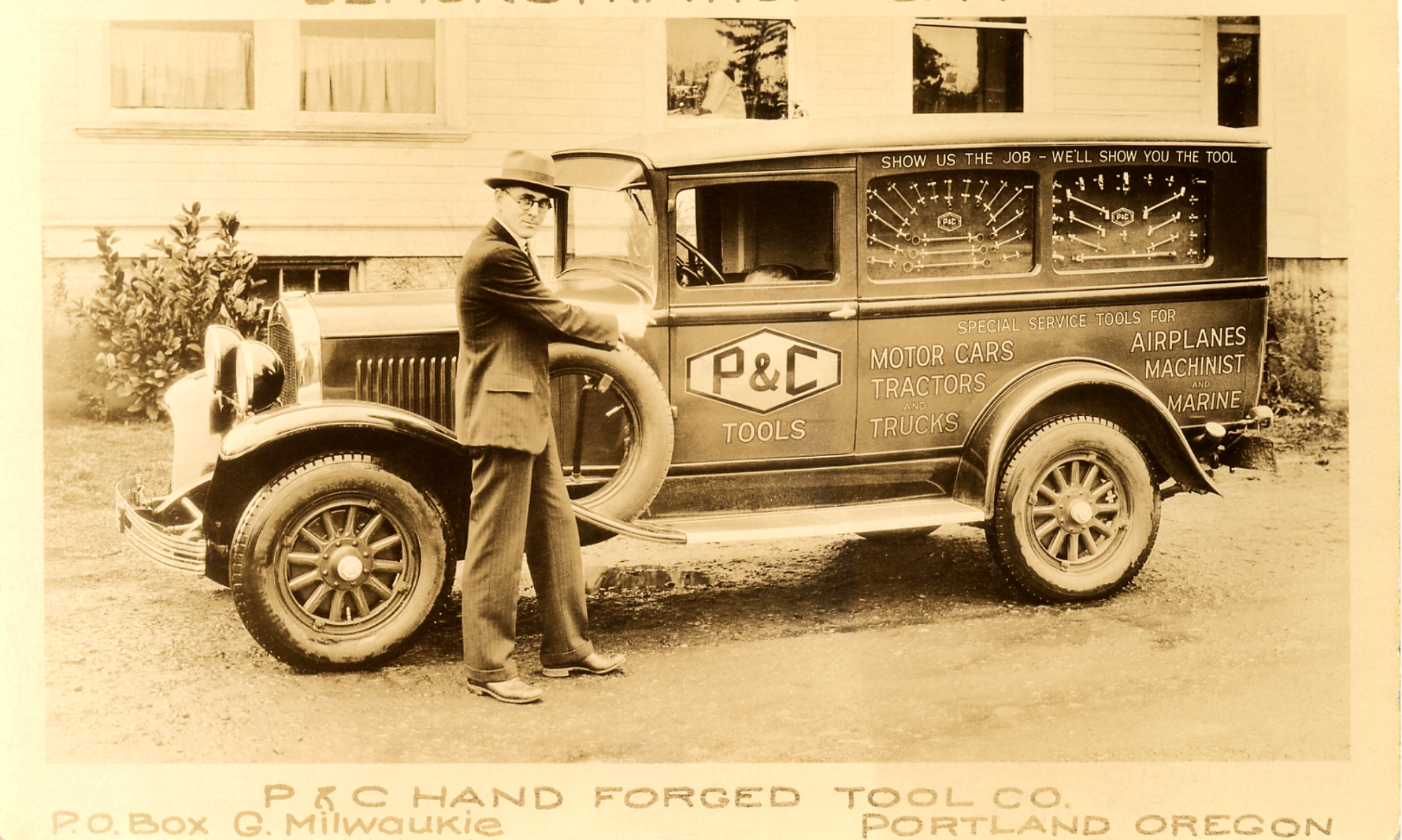One of the “holy grails” of P&C collectors has to be the early wooden box tool sets. An example from the 1927 catalog is seen below. These boxes appear to have been made for only a few years in the early history of P&C.
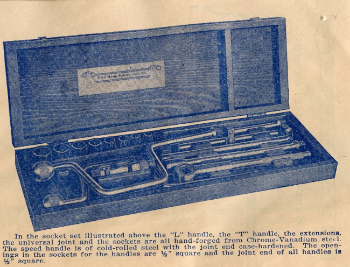
While seen in the 1927 Catalog, wooden boxes appear to be absent in the 1928, or at the very least, a mix of metal and wood. The labels in 1928 were very different and were hexagonal in shape. Two different styles of hex labels are seen in the 28 catalog; one that may have been adhesive and another that might have been riveted in place.
If we assume wooden boxes were made from 1923 to about 1928, there is little wonder they are rare. Even more rare is finding such a box with an intact paper label.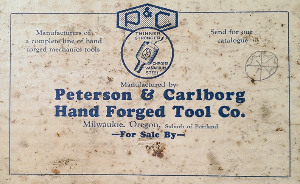
One featured on the website is on the “Patents” page. If you scroll down to the second patent, at the bottom of the listing, there are links to pictures of that particular tool in one of these rare wooden boxes…thanks to Greg Kareofelas. The labels are generally in a format where they leave room for a distributor’s stamp, as seen in this example to the right, courtesy of the Milwaukie Historical Society.
In this example, no distributor was noted and the space is obviously blank..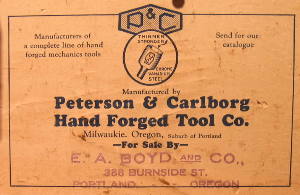
Below the Milwaukie Historical Society example is a label courtesy of Timothy Peterson. E.A. Boyd used a stamp to provide his information. Most of you will recognize E.A. Boyd and will remember the interesting story regarding his business dealings with John & Charlie
Troy Dietz recently sent me photographs of one of these rare wooden boxes he discovered. This box label presents an interesting twist.
Below is a photograph of the box and contents.
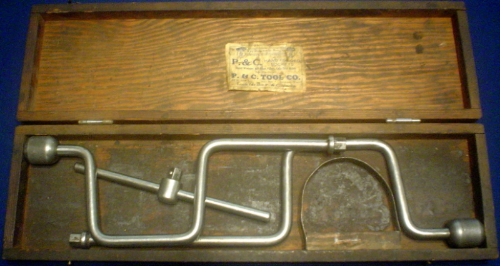
At the bottom of the page you can see a closeup of the paper label.
A little tattered it still looks good for 90 years of age. As you can see it follows a slightly different format than the labels seen above. Instead of “For Sale By”, the wording is now “Sole Distributors”. The distributor is printed instead of stamped and listed as “P. & C. Tool Co., 424 W. First Ave. Main 2088, Spokane, Wash.”.
The label seems to indicate the presence of a P&C Tool retail outlet store in Spokane. Indeed, the address is an early business district in Spokane. 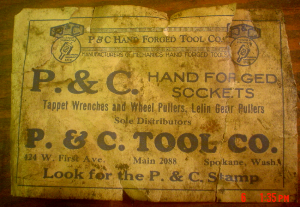
Based on information from Jim Peterson, we know P&C did have a similar store in San Francisco.
The label raises many questions: How many similar small retail stores did P&C have during this time period? What other evidence remains regarding these stores? Why did P&C pull back from this marketing strategy?
